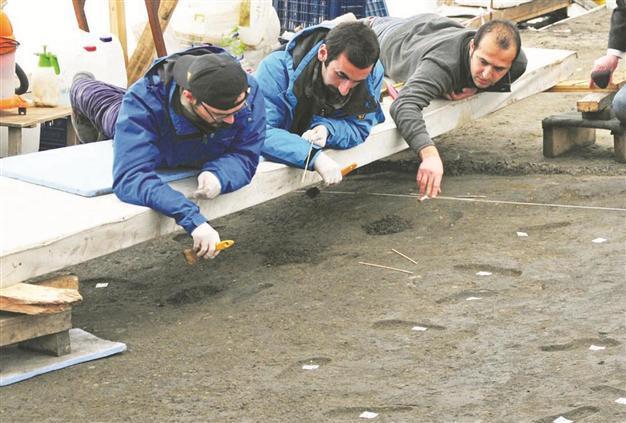‘Heavy equipment’ used at Neolithic site
Ömer Erbil - ISTANBUL / Radikal

The excavations for a major rail project in Istanbul were hampered after historical remains were found in the Yenikapı neighborhood of the city.
The contractor firm conducting the Marmaray Metro Project in Istanbul’s Yenikapı neighborhood reportedly entered an archeological site with heavy construction equipment despite the presence of ancient footprints, 8,500-year-old graves, and wooden artifacts dating back to the Neolithic period.
The firm intruded onto the site without authorization from the Preservation Board and despite the warnings of the archaeologists, who issued a statement underlining that the historic artifacts were under serious threat.
“According to Article 63 of the Constitution on Conservation of Historical, Cultural and Natural Wealth and international treaties, such activities are recognized as offenses. It is also unacceptable for professional and scientific ethics,” the statement said, calling on judicial authorities, universities, trade associations and the national and international public to take immediate action.
During the excavations of the Marmaray Project, some layers of the Neolithic period that could shed light on Istanbul’s history were uncovered, drawing worldwide interest.
After the artifacts and footprints were removed from the area, the layer was abandoned in order not to disrupt the works of the metro project. The archaeologists were expected to continue their excavation works before the planned construction of a car park in the area was begun. But recently, when a crane collapsed due to a landslide in the archaeological area, the firm immediately took action with heavy machinery. If authorities do not take immediate action, the layer of Neolithic period could be completely destroyed, officials said.
The archaeologists said they could prevent a landslide without heavy equipment, arguing that with the bored piling method and three to four days of work, a landslide could be prevented. However, the contractor chose to use heavy equipment, according to the archaeologists.
